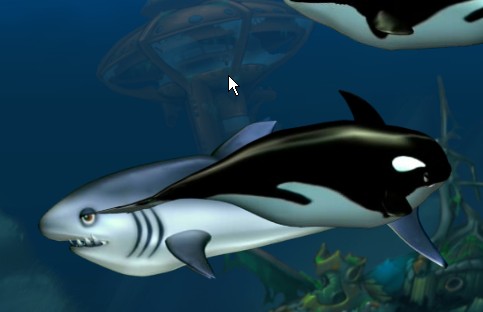False killer whales spotted in feeding frenzy off Dana Point Coast – rare for this area. Eritchie@scng.com Orange County Register. Forney is a false killer whale specialist. Jul 02, 2019 We are proud members of the Pacific Whale Watch Association formerly known as Whale Watch Operators Association Northwest. The 'Association' has worked with scientists, NOAA and industry leaders to assist in writing the Whale Watching Guidelines and Best Practices. Read more about our commitment to responsible eco-tourism here. The Killer whale or'Orca' is the third biggest creature in the game, only passed out by Goliath the great white shark at full size and the Alien Intruder at full size. Orcas appear in 8 levels in the game, or 2/15 in total. They appear in Goliath and Layla levels, but they are only edible.
All 75 species of whale are carnivores, but their hunting methods vary considerably. Toothed whales, such as the sperm whale and the killer whale (or orca), hunt in the same basic way as sharks. They have a row of strong teeth, and they tear into their prey or swallow it whole. Many toothed whales eat only small fish and other easy-to-catch prey. Orcas, on the other hand, may attack sea lions, seals and even other whales. Like wolves, polar bears and other land predators, they track and stalk their prey, picking out a weaker target (such as a baby humpback whale). Orcas and other species usually hunt in packs, sometimes surrounding their prey. Despite these tendencies, orcas and most other toothed-whale species pose little threat to humans. In fact, many species seem to enjoy human company.
Some of these hunters have developed echolocation abilities to help them find their prey and locate any obstacles. Echolocation is a very simple concept: The whale emits a series of clicks (or other sounds) from its mouth or from organs in its head, and the sound waves travel out in the surrounding water. When the sound waves reach an obstacle or another animal, they bounce off of it and travel back to the whale. Water conducts sound very well, and whales have excellent hearing, so they may pick up even the faintest echoes from an object miles away.
Advertisement

Feeding Frenzy Killer Whale Movie

Feeding Frenzy Play Free
In a volume of water with consistent pressure, sound will always travel at the same speed. By processing how long it takes the echo to return, the whale can calculate how far the sound wave traveled, and therefore determine how far away the object is. Like most animals, whales have two ears, one on each side of their head. This lets them determine the direction a sound is coming from. If the sound reaches the right ear first and is slightly louder in the right ear, the sound source is to the right; if it reaches the left ear first, it is to the left. In the dark world of the ocean, whales must sense their environment primarily through sound. In whales, a greater percentage of the brain is dedicated to processing aural information than to processing visual information. (In humans, the reverse is true.)